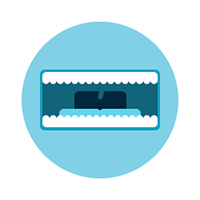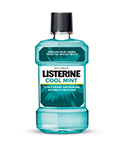WHAT IS TARTAR? HOW CAN I PREVENT TARTAR BUILDUP?
Tartar results when plaque overstays its welcome. When tartar begins building up, it can lead to damaging consequences for your teeth such as tooth decay, which is why you should aim to prevent tartar buildup from occurring in the first place. So what is tartar exactly, and how can we go about controlling and preventing tartar buildup?
What is Tartar?
Tartar — also known as calculus — is plaque that has calcified. Once in that state, it is no longer possible to remove by yourself and can gradually start spreading and affecting neighboring teeth. If you have visible tartar on your teeth, it’s because those areas weren’t cleaned well enough when the buildup was still soft plaque.
The Consequences of Tartar Buildup
Tartar buildup can lead to an array of undesirable consequences, which include:
Aesthetic problem: tartar usually takes on the stain of the foods and drinks we consume. It can be yellow, brown, or even green. The contrast against your tooth enamel can make your smile look less than appealing. Unfortunately, no amount of brushing will remove it.
Halitosis: bad breath bacteria often accompany tartar buildup. Since the biofilm tend to cause gum disease, the foul odor of dying tissues can be hard to fight off without the help of a dental professional.
Tooth mobility and loss: tartar buildup under your gums causes the tissue to detach from the surface of your tooth roots. When this happens, the bone keeping your teeth in place also starts to shrink away. Gradually, you might see receding gumlines, tooth mobility and possibly even lose the tooth if you don’t have the infection treated quickly enough. This phase of gum disease is also highly linked with major health problems, such as heart disease, diabetes, infertility and preeclampsia.
How Can I Remove Tartar Buildup?
Tartar cannot be brushed or flossed off of your teeth. The best treatment for tartar buildup is preventing it with daily brushing, flossing and mouth rinsing. Only your dentist or hygienist can remove the tartar buildup for you using special tools like ultrasonic cleaners that help to gently lift away the calcified deposits without harming the tooth.
Trying to force the tartar off on your own can cause irreversible trauma to your gums and tooth surfaces. Tartar is like an iceberg; once you see it build up on your teeth, there’s likely a much larger amount under your gums that you can’t see. It’s this sub-gingival (below the gum line) buildup that’s the most dangerous to the health of your gums and smile.
Even if you don’t see tartar buildup, it doesn’t mean you don’t have any. It’s quite common for tartar to form between your back teeth just under the gums. You won’t know it’s there until your dentist takes X-rays or your hygienist feels it with a special instrument during your dental cleaning.
How to Control and Prevent Further Tartar Buildup
People with good oral cleansing habits may still see mild tartar buildup from time to time. It typically forms around saliva-producing glands first, which are located on the inside of your lower front teeth and the outside of your upper back teeth.
Schedule a dental checkup every six months. Even if you can’t see visible tartar, your hygienist will thoroughly clean your teeth so that tartar buildup is easier to avoid until your next visit. If you have heavy tartar buildup, you may need to be seen as often as every three to four months.
Consider changing your at-home oral care routine to prevent tartar buildup by choosing an electric toothbrush and using a tartar-control mouthwash.


